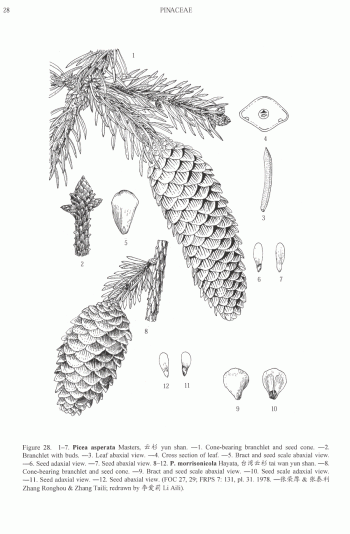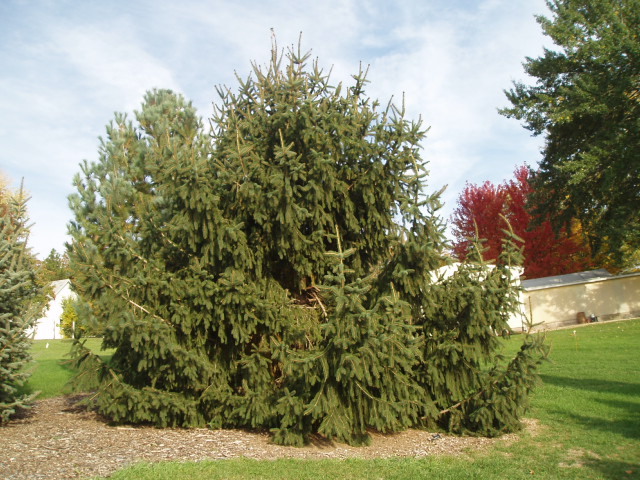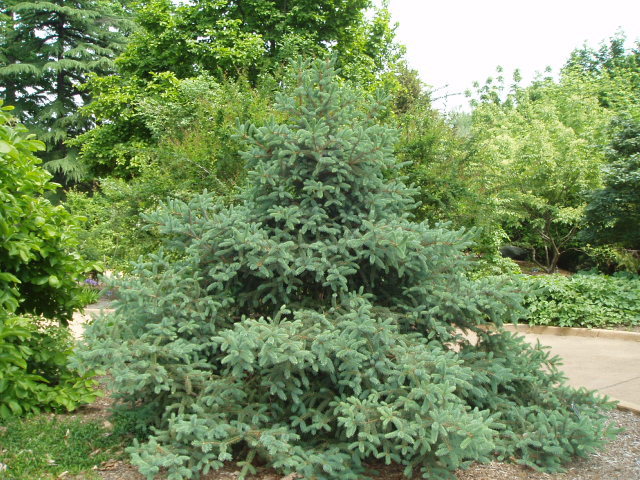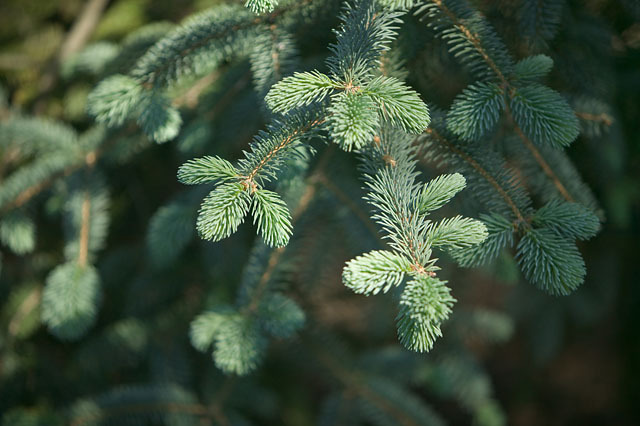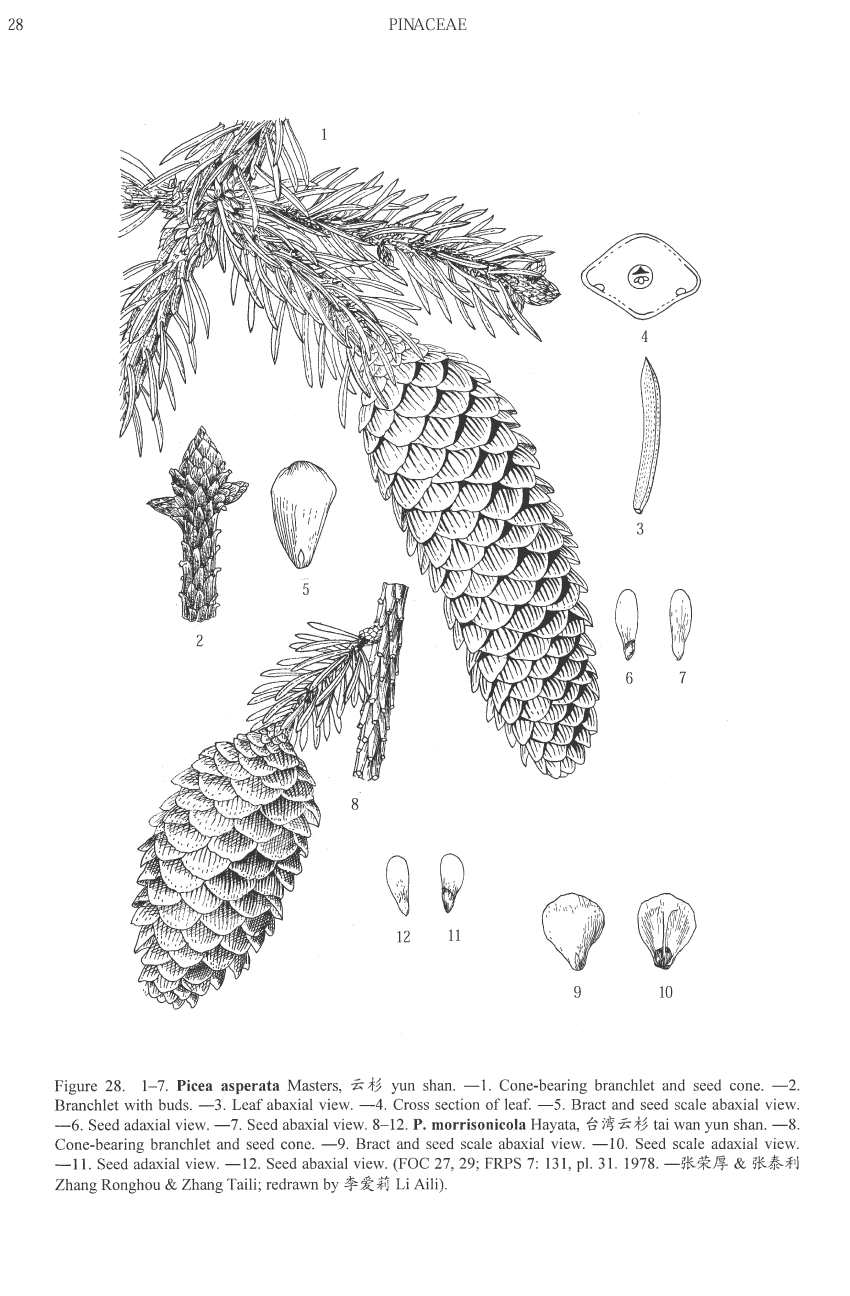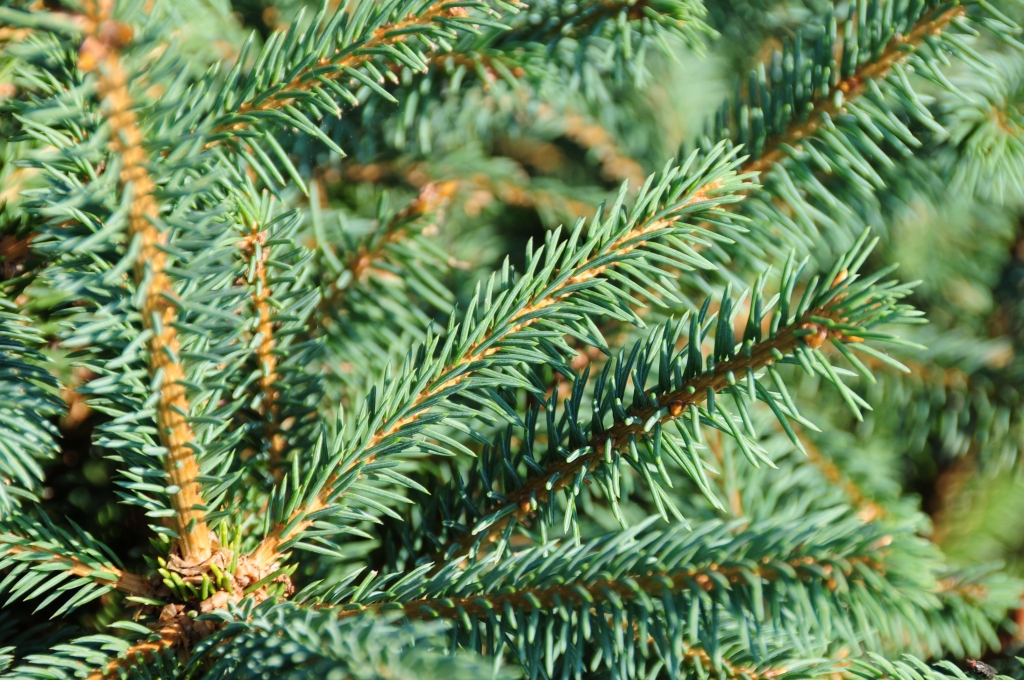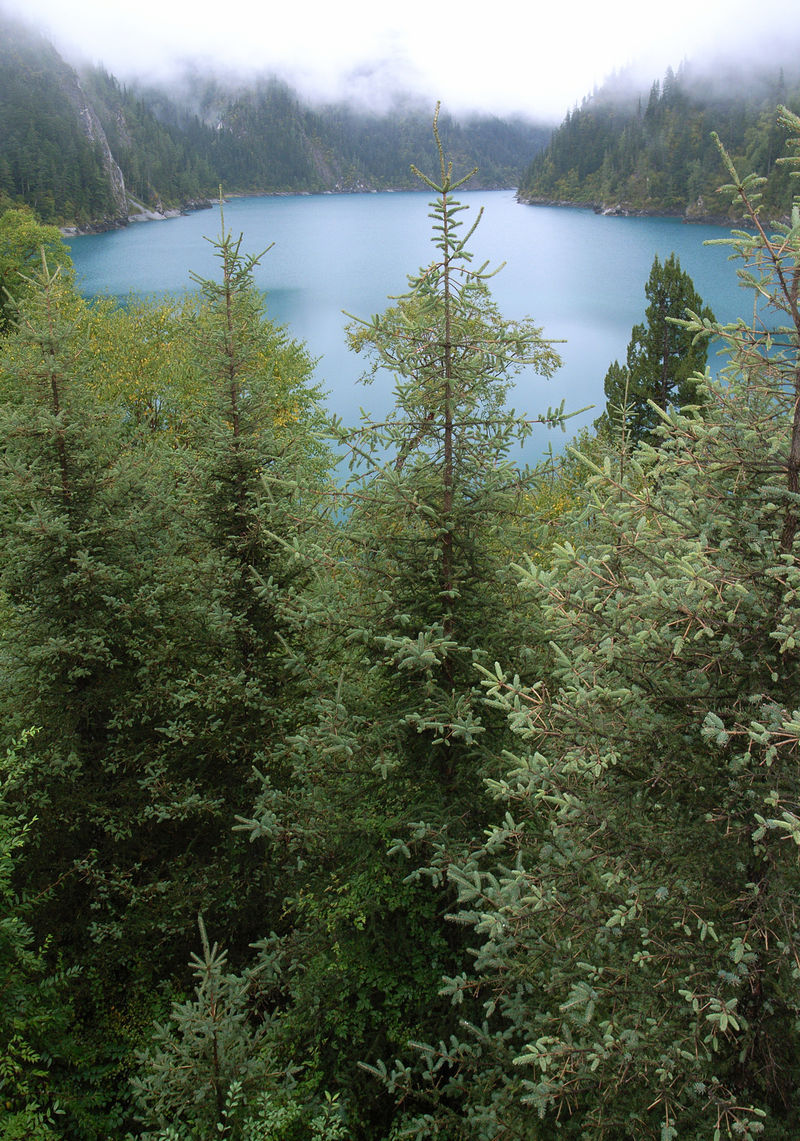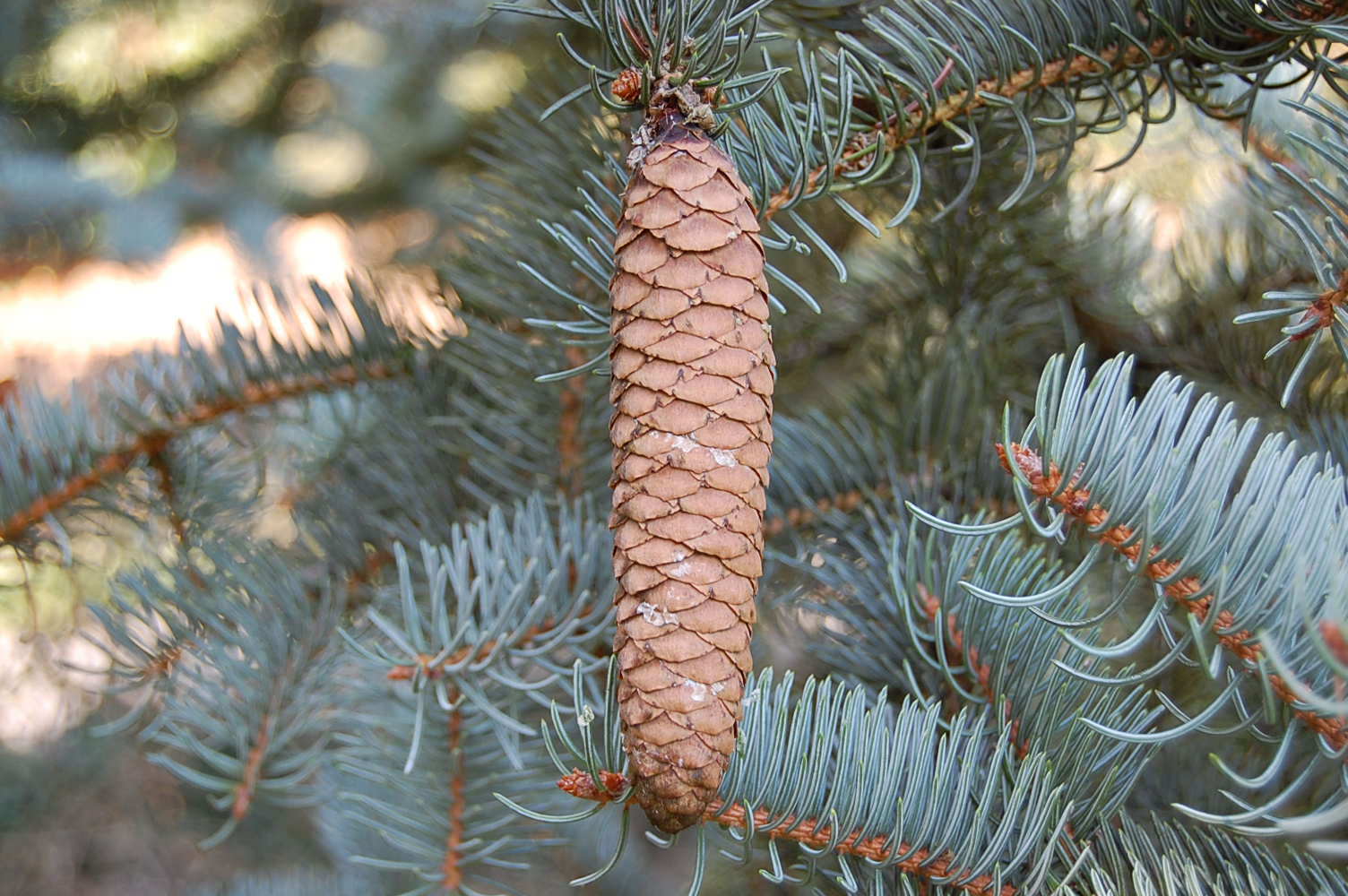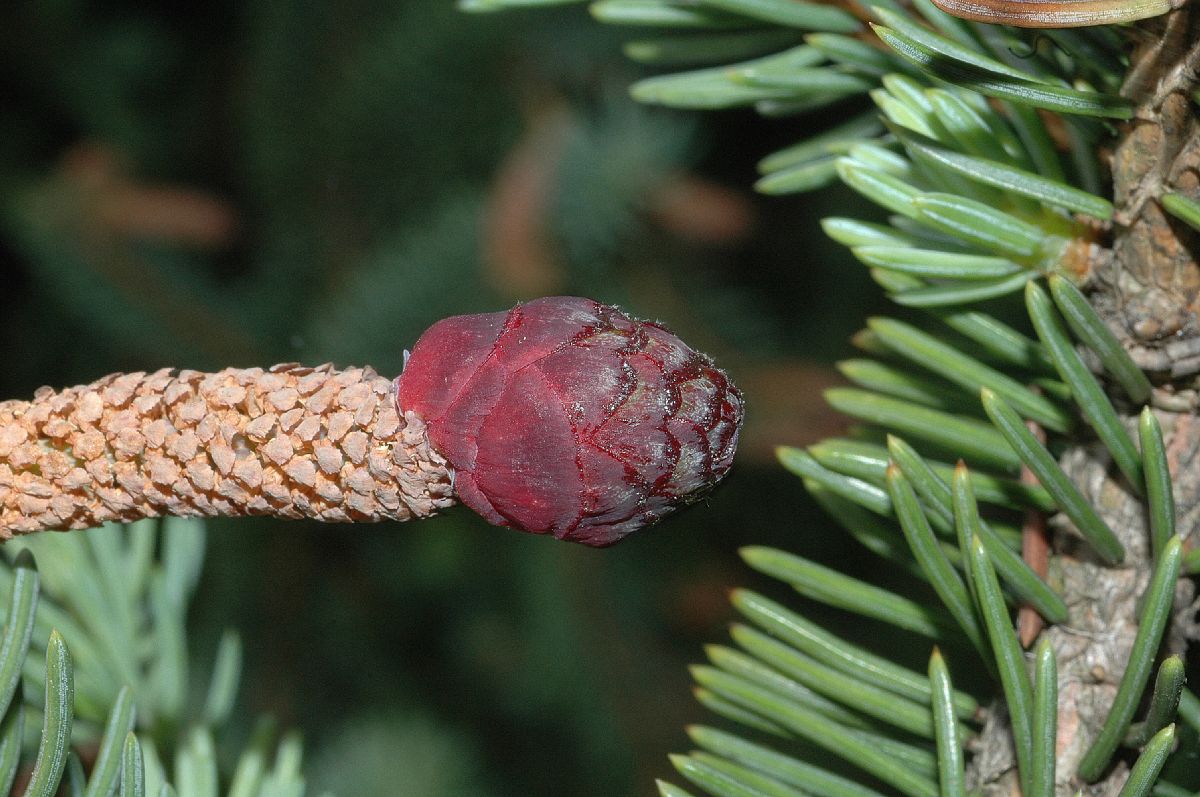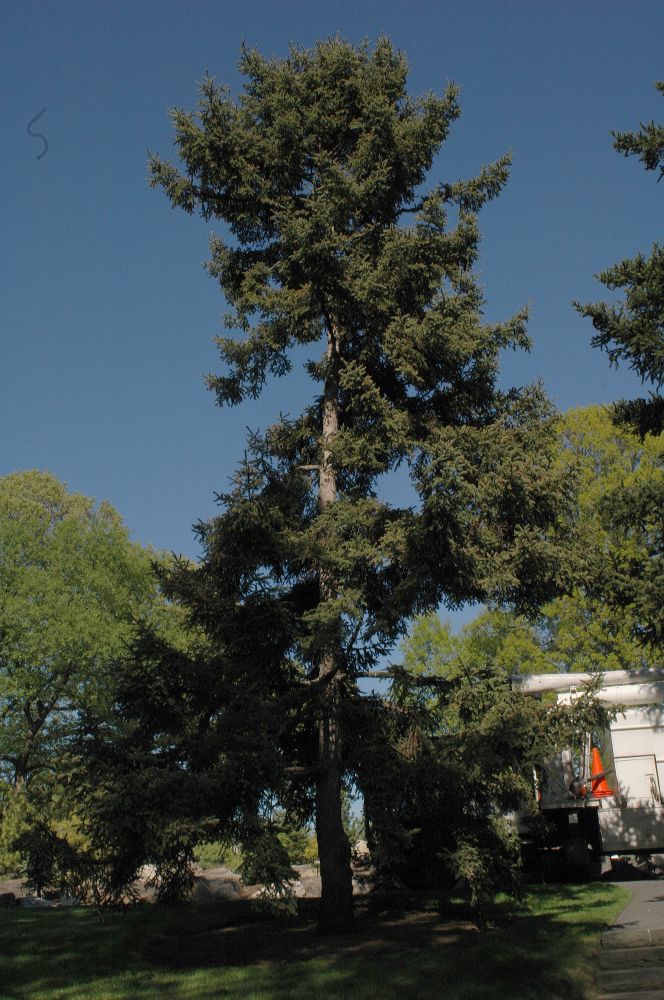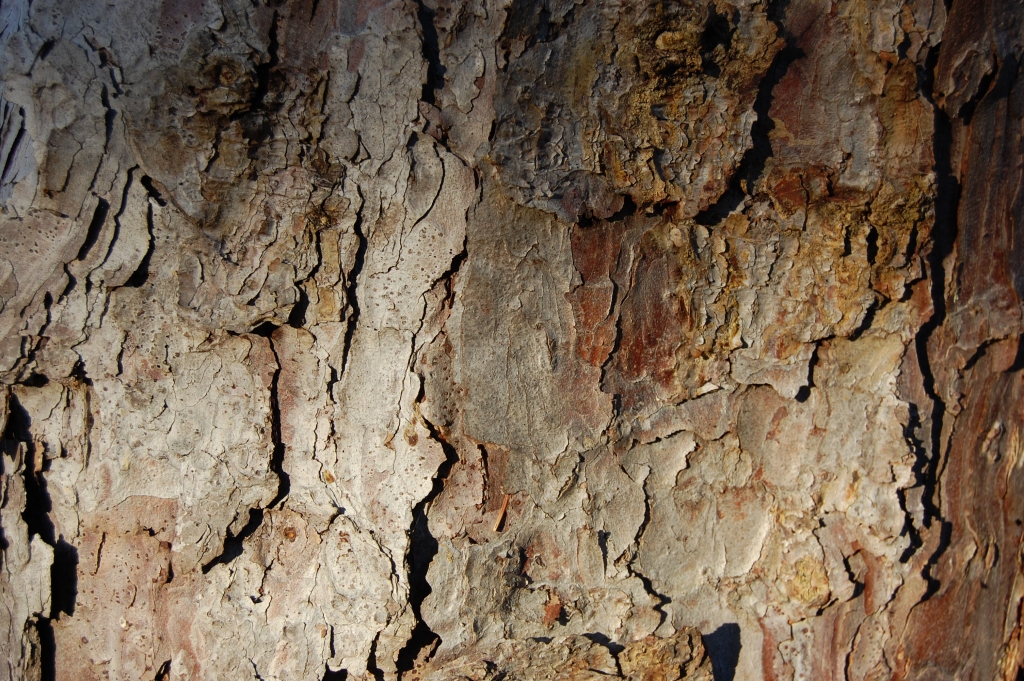Picea asperata, as described in 1906 by Maxwell Tylden Masters (1833-1907), in Journal of the Linnean Society, Botany, 37th edition, is commonly known as Dragon spruce; as well as äº‘æ‰ (yun shan) in the Chinese language. The species name describes this species' very sharp and stout needles "aspera" translates into "rough" in the Latin language.
There are 4 recognized specific varieties, based on geography and differences in branchlets and seed cones.
Ethnobotany. The timber is used for construction, aircraft, railway sleepers, furniture, and wood fiber. The trunk is used for producing resin, and the roots, branches, and leaves for producing aromatic oils.Description. Dragon spruce is an evergreen, coniferous species of tree that grows to mature heights of 150 feet (45 m); with a trunk up to 40 inches (1 m) in diameter, measured at breast height.
- Bark is grayish brown in color, furrowed into irregular, rough, scaly plates.
- Branchlets are brownish yellow or reddish brown when young, turning brown or brownish gray in their 2nd or 3rd year; with pubescent or glabrous texture.
- Foliar buds are conical or ovoid-conically shaped and resinous, with appressed or slightly recurved scales in apical buds, and more-or-less recurved and keeled at the bases of branchlets.
- Pulvini are are rigid, witch a glaucous texture.
- Leaves (needles) are directed forward or ascending on upper side of branchlets, parted and spreading laterally on lower side. Individual needles may or may not have a glaucous texture; and are linear, growing with a slight curve, and quadrangular-rhombic in cross section. Needles measure 0.4 to 0.8 inch (1 - 2 cm) long by 0.04 to 0.08 inch (1 - 2 mm) thick with 4 to 8 lines of stomata along each surface, acute or slightly pungent apices.
- Seed cones are green in color, maturing pale- or reddish brown, with a cylindric-oblong or cylindric shape. Cones measure 2 to 6.4 inches (5 - 16 inches) long by 1 to 1.4 inches (2.5 - 3.5 cm) broad, with obtuse apices.
- Seed scales along the middle of cones have an obovate shape, measuring circa 0.8 by 0.6 inch (2 × 1.5 cm), with entire or denticulate margins, and rarely 2-lobed apices.
- Seeds have an obovoid shape, measuring circa 0.16 inch (4 mm); with obovate-oblong, pale brown wings, circa 0.44 inch (1.1 cm) longer. Pollination takes place in April and May, seed maturity is in September and October.
According to
Arthur Jacobson, "they are vigorous, yet graceless, coarse, often gaunt, of unremarkable color, and abominably prickly."
Conifer specialist, J. Silba accepts none of the described varieties even at a varietal level, claiming, "a study is needed to compare the 5 so-called varieties, resolving both their botanical placement and horticultural value. None offers ornamental value that cannot be easily beat by other spruce.
Distribution. This species is native to China - southeastsern Qinghai, northeast of Qinghai Hu (Lake Kokonor), Gansu, Sichuan, Ningxia (Helan Shan), and southwestern Shaanxi provinces, found growing in mountains and river basins at elevations of 7,800 to 12,000 feet (2,400 - 3,600 m) above sea level.
Hardy to USDA Zone 6 - cold hardiness limit between -10° and 0°F (-23.2° and -17.8°C).
Champion trees.
- Seattle, Washington 70 feet (21 m) tall, by 4 feet, 4 inches (1.3 m) wide, measured in 1990; planted in 1947
- Tibet, 147.5 feet (44.25 m) tall, measuring in 1926
- Rochester, New York, 75 feet (22.5 m) tall by 6 feet, 4 inches (1.9 m) wide, measured sometime around 1980
